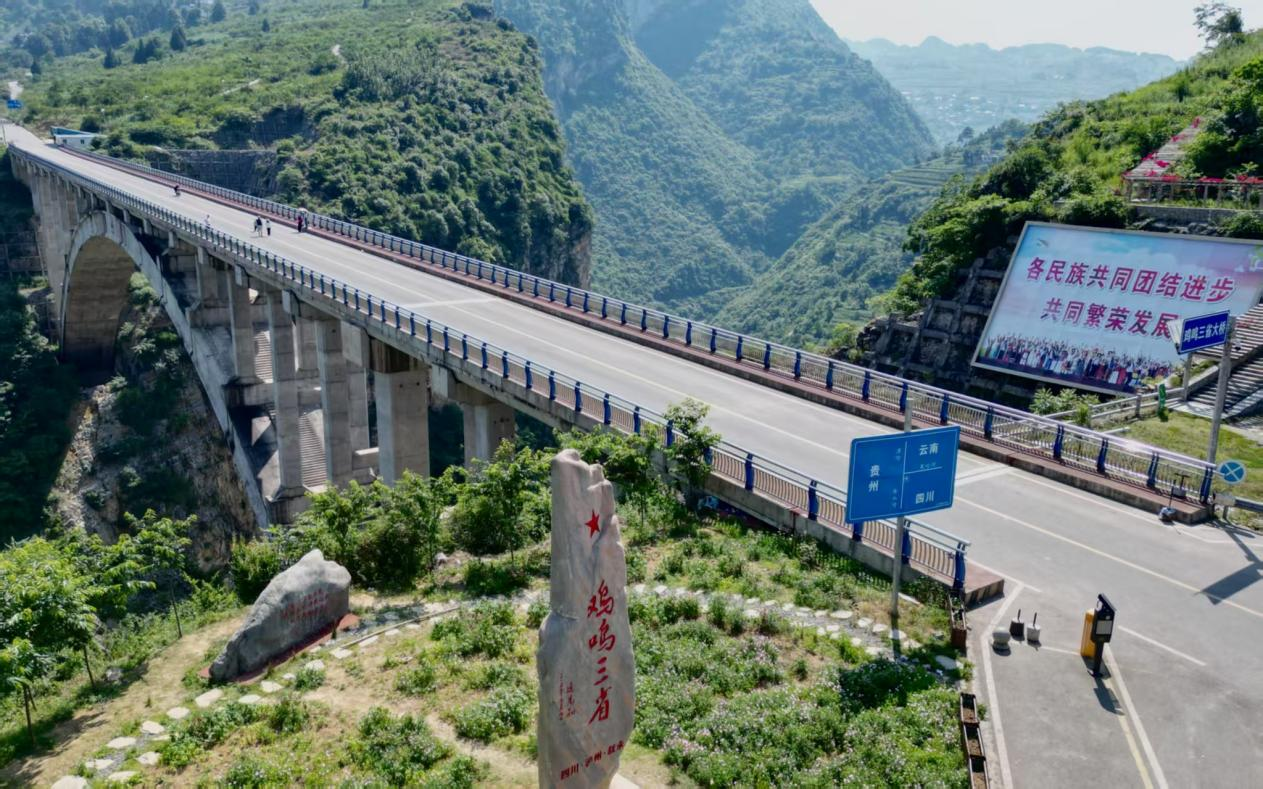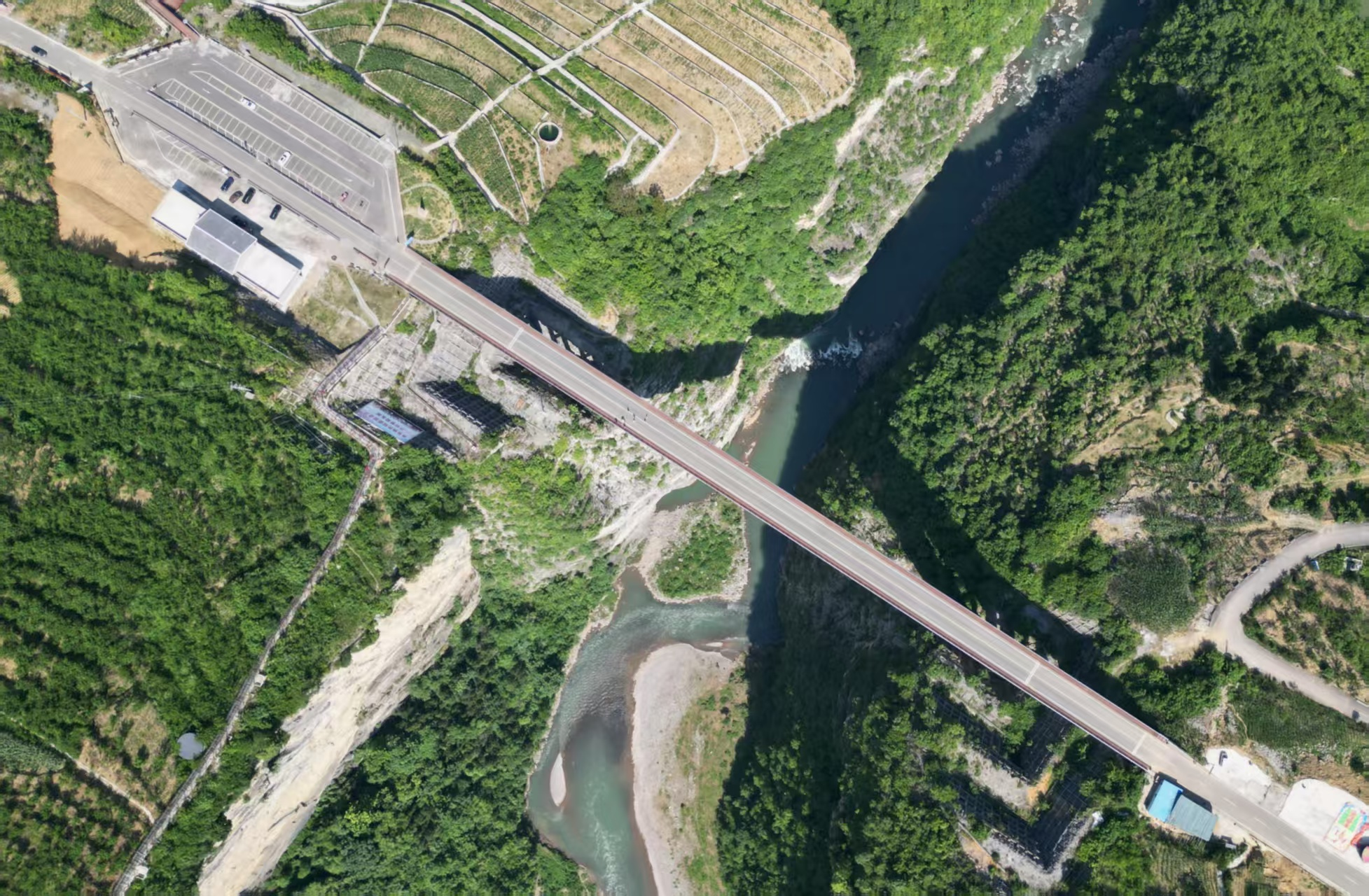
 Print
Print
Five Years since the Opening of Jimingsansheng Bridge: Transportation Changes Boost High - quality Development in Ethnic - Minority - Inhabited Areas
2025/06/16 14:54 Origin:cced.cn
At the "Y"-shaped Grand Canyon where the Guoha River and the Wei River converge to form the Chishui River, the water rushes turbulently and the cliffs are precipitous. The Jimingsansheng Bridge is located here, connecting Chishuihe Village, Shuilao Yi Ethnic Township, Xuyong County, Luzhou City, Sichuan Province and Delong Village, Potou Town, Zhenxiong County, Zhaotong City, Yunnan Province, just like a giant dragon lying across the canyon.

On January 21st, 2020, the Jimingsansheng Bridge at the junction of Sichuan, Yunnan and Guizhou provinces was officially opened to traffic, changing the history that Xuyong County and Zhenxiong County, two former national - level poverty - stricken counties, faced each other across the river without connection. After the bridge was completed, it completely changed the travel mode of the local Han, Yi, Miao and other ethnic groups, and became a veritable "Heart - Connecting Bridge" and "Prosperity - Leading Bridge", directly benefiting more than 400,000 people.
The junction of Sichuan, Yunnan and Guizhou provinces is called "Jimingsansheng", which means that when a rooster crows in a village, the neighboring villages in the three provinces can all hear it. The Guoha River and the Wei River meet here to form the Chishui River, and the three provinces are located on the three sides of the cliff. Historically, this place has always been a geographical dead corner with blocked transportation and extremely difficult access.
Yang Mei, who grew up by the Chishui River, has heard the sigh of "In Jimingsansheng, traveling is as difficult as climbing to the sky" since she was a child and deeply knows the hardship of inconvenient transportation. In the past, the people on both sides of the Chishui River at the junction of Sichuan, Yunnan and Guizhou provinces had to climb mountains and cross ridges to travel, which took 4 hours. "In the past, when we went to the market in Potou Town, Yunnan, we had to set off before dawn and walk 4 hours on the mountain road," Yang Mei recalled.

Xiong Fang, who lives in Shuilao Yi Ethnic Township after marriage, has her mother's home in Potou Town, Yunnan Province. "In the Spring Festival of 2015, my husband and I were in a passionate relationship. At that time, there was no such bridge. Every time we met, it took us several hours on the road," Xiong Fang said. "At that time, I was thinking in my heart that if only a bridge could be built."
Xiong Fang's wish is also the common wish of many local people. The proposal to build the Jimingsansheng Bridge was put forward in 1982 by Yang Meifen, a deputy to the National People's Congress from Xuyong at that time. However, due to the complex local terrain and geological conditions and the limitation of the bridge construction technology level at that time, there was no substantial progress in the bridge planning and construction.
In recent years, Sichuan has closely adhered to the main line of forging a strong sense of community for the Chinese nation and incorporated promoting all ethnic groups to jointly move towards socialist modernization into the overall planning of the province's development strategy. In 2016, the Jimingsansheng Bridge was included in the project of replacing ferry with bridge for implementation and construction. On July 3rd of the same year, the Jimingsansheng Bridge officially started construction.
After about 3.5 years, the Jimingsansheng Bridge was completed and opened to traffic. This bridge is the eighth bridge in China built by the cantilever casting method. It is 286.4 meters long, with a main span of 180 - meter reinforced concrete deck - arch bridge. The bridge width is 11.5 meters, with two - way two - lane traffic.
The Jimingsansheng Bridge is not only a transportation breakthrough, but also a vivid practice of promoting the integrated development of national unity and rural revitalization. After the bridge was opened to traffic, the driving time between the two counties was shortened to 1 minute. The improvement of transportation has brought tangible benefits: the transportation cost of agricultural products has been reduced by 60%, and logistics vehicles can directly drive to the orchard. Agricultural products such as sweet oranges and ice - crisp plums are no longer unsalable. This year, 30% of Yang Mei's family's sweet oranges have been sold all over the country through live - streaming. She has also participated in e - commerce training courses and learned live - streaming sales to introduce Yi - style bacon and sweet oranges. The bridge has also attracted many tourists. Yang Mei's old house has been transformed into a homestay, and it is full of guests every day in the peak season, with the income doubling several times.
Xiong Fang also said with emotion, "The long journey that used to take several hours has become a drive of a few minutes. The once - isolated village has become a popular online - check - in place. I, who could only work outside in the past, can now do some small business at home and take good care of my children. These changes are all due to the construction of the Jimingsansheng Bridge."(Text/Li Feng, Photos/Wang Lei)
Copyright © CCEDN.COM.CN. All Rights [京ICP备2024049485号-1] Tel: 0086-10-88820521

